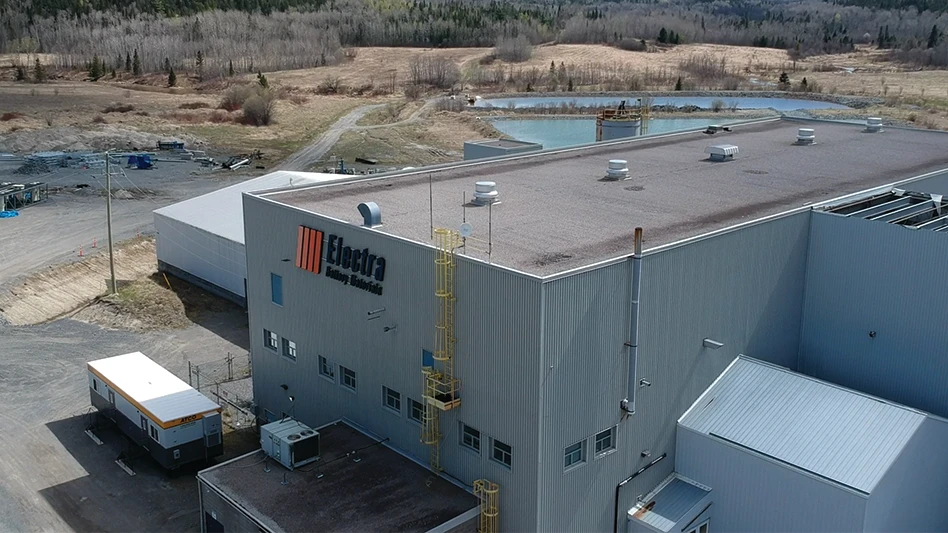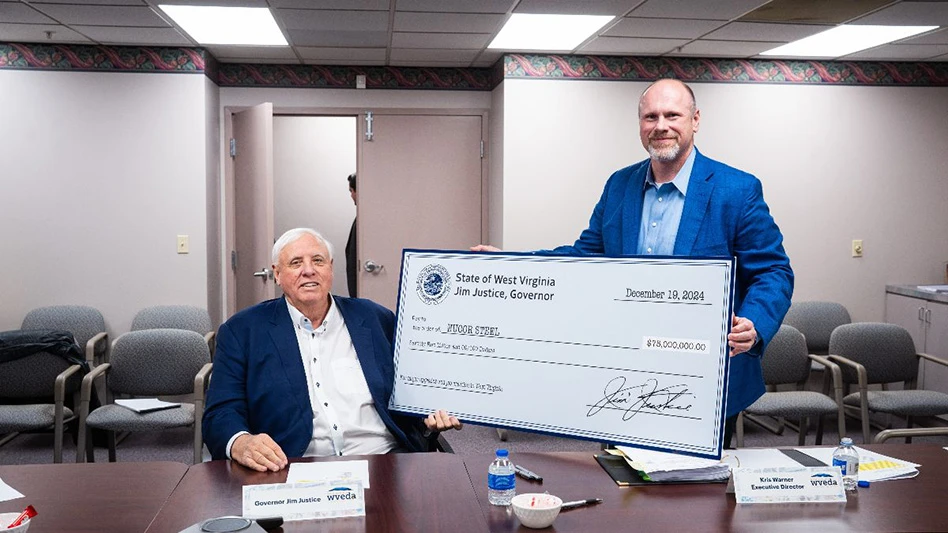SHORT NAP
The spring of 2004 has finally seen a reversal in the direction of ferrous scrap pricing, with a lack of buying from China cited as the primary culprit.
But the price drops may be short-lived, according to speakers at the Ferrous Spotlight session at the ISRI (Institute of Scrap Recycling Industries Inc.) Annual Convention, held in late April in Las Vegas.
"I’m not so sure the storm’s over," said John Ferriola, an executive vice president with Nucor Corp., Charlotte, N.C. "I think there’s a temporary lull," he said regarding ferrous scrap pricing, which he said will continue to have pressure exerted on its supply by China’s growing steel industry.
Ferriola noted that Chinese steel production has zoomed from 100 million tons in 2000 to 250 million tons just three years later in 2003. This phenomenal growth, combined with a revival of the U.S. economy in late 2003, has created enormous pressure on all steelmaking raw materials prices, the Nucor executive noted.
In addition to scrap climbing from less than $100 per ton to $270 per ton, pig iron has increased from $108 per metric ton in 2001 to $310 per metric ton earlier this year, while steel slabs have also zoomed from $163 per metric ton in 2001 to $325 per metric ton earlier this year.
Ferriola also remarked that a weaker U.S. dollar usually results in higher scrap prices. "As the dollar weakens, scrap prices rise. The inverse relationship is almost phenomenal," said Ferriola.
He also added that industry consolidation into a "big three" trio of companies (Nucor, U.S. Steel and ISG) has helped the steel industry manage capacity better, helping to avoid oversupply situations that can suppress steel prices. Those three companies now produce two-thirds of America’s flat-rolled steel, Ferriola said.
Ferriola predicted that the "big three" companies will continue to acquire additional capacity and that a revived U.S. economy should keep steel supplies tight in the U.S. He said China is the "wild card" in trying to predict global trends.
Scrap broker Alex Antikides of Pan Global Resources Ltd., London, gave an overview of how the expanded European Union will be a larger force in the steel and ferrous scrap industries, noting that new member nations, such as Poland, will probably experience advances in their scrap processing technology as a result of their entry into the EU.
Stock market researcher Michele Appelbaum told attendees that Wall Street might be ready to take another look at scrap companies as equity market IPO candidates. "A successful company that can make money can always attract Wall Street’s attention," she remarked.(Additional news about ferrous scrap, including breaking news and consuming industry reports, is available online at www.RecyclingToday.com.)
ISG BUYS GEORGETOWN MILL
(Since publication of this news item Leggett & Platt has outbid ISG to acquire Georgetown Steel's operations)
International Steel Group Inc. (ISG), Richfield, Ohio, has signed an agreement to acquire the assets of the former Georgetown Steel Co. facility in Georgetown, S.C., subject to closing adjustments and approval by the U.S. Bankruptcy Court. The agreement has been approved by the boards of directors of both companies.
ISG plans to restart operations at the plant in the third quarter of 2004. Initial discussions are taking place with the United Steelworkers of America regarding a labor contract and staffing of the plant.
Georgetown Steel, a manufacturer of high-carbon steel wire rod products, filed for Chapter 11 bankruptcy last October and ceased production. The facility has annual steelmaking capacity of 1 million tons and rolling capacity of 800,000 tons.
The Georgetown plant produces wire rod products and also has equipment to make up to 500,000 tons of direct reduced iron each year.
The deal continues ISG’s tactic of buying steel mills from bankruptcy courts, with the Georgetown plant joining mills acquired by ISG from LTV Corp., Bethlehem Steel Corp., Weirton Steel Corp. and Acme Steel Co.
The Georgetown mill opened in the late 1960s and employed from 250 to 500 people during its last years of operation, according to a report in the Cleveland Plain Dealer.

Explore the June 2004 Issue
Check out more from this issue and find your next story to read.
Latest from Recycling Today
- Reconomy brands receive platinum ratings from EcoVadis
- Sortera Technologies ‘owning and operating’ aluminum sorting solutions
- IDTechEx sees electric-powered construction equipment growth
- Global steel output recedes in November
- Fitch Ratings sees reasons for steel optimism in 2025
- P+PB adds new board members
- BlueScope, BHP & Rio Tinto select site for electric smelting furnace pilot plant
- Magnomer joins Canada Plastics Pact





